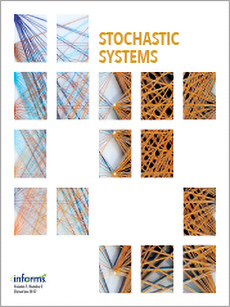Abstract
Typical protocols for peer-to-peer file sharing over the Internet divide files to be shared into pieces. New peers strive to obtain a complete collection of pieces from other peers and from a seed. In this paper we investigate a problem that can occur if the seeding rate is not large enough. The problem is that, even if the statistics of the system are symmetric in the pieces, there can be symmetry breaking, with one piece becoming very rare. If peers depart after obtaining a complete collection, they can tend to leave before helping other peers receive the rare piece. Assuming that peers arrive with no pieces, there is a single seed, random peer contacts are made, random useful pieces are downloaded, and peers depart upon receiving the complete file, the system is stable if the seeding rate (in pieces per time unit) is greater than the arrival rate, and is unstable if the seeding rate is less than the arrival rate. The result persists for any piece selection policy that selects from among useful pieces, such as rarest first, and it persists with the use of network coding.
Citation
Bruce Hajek. Ji Zhu. "The missing piece syndrome in peer-to-peer communication." Stoch. Syst. 1 (2) 246 - 273, 2011. https://doi.org/10.1214/10-SSY017
Information





